[Irena enjoys a whimsical three-person show playing with the artists’ perceptions of their environments. All of the show’s small works are painted or drawn. — the Artblog editors]
Old City gallery Hooloon Art recently unveiled its latest exhibit, featuring the works of three contemporary artists representing Brooklyn, London, and San Francisco. This exhibit of small works on paper, panel, and found postcards brings together the art of Chris Ballantyne, Guillaume Cornet, and Tracy Taylor Grubbs, who each attempt to define specific spaces through natural and unnatural imagery. Within the show, images of urban density, landscapes, and abstracted organic elements embody the spirituality of being able to observe the world through a variety of lenses.
Seeking connections between the works
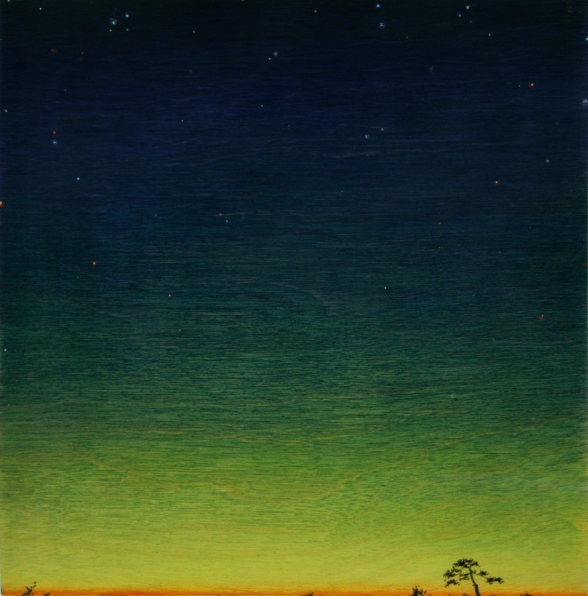
The relationships between the three groups of artworks are not immediately easy to find–London artist Cornet, who refers to himself as”Mr Guil,” depicts cartoon-like imaginative figures and characters in hectic city scenery and mini urban narratives. Grubbs, from San Francisco, is interested in the processes of the natural world and alters vintage postcards into earth-toned abstract pieces. The Brooklyn-based Ballantyne paints American landscapes that are often obstructed by man-made industry.
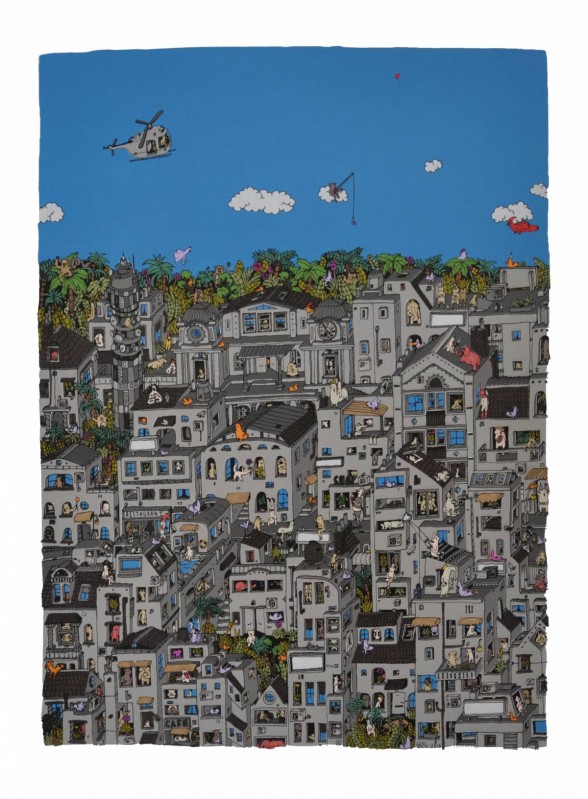
So what type of narrative can this group of painters create when their works are shown side-by-side? A common motif for all three artists is perception: how do we perceive the world, and what types of elements does a scene have to have in order for us to change those perceptions?
Isolation and calm
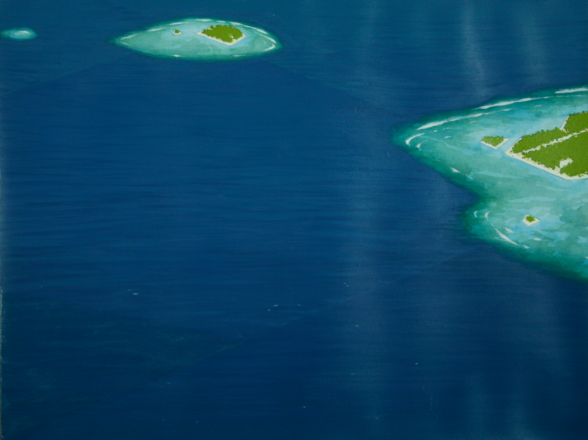
Chris Ballantyne works in various media to represent the quiet discord between the natural and the unnatural. His images evoke a sense of isolation, and he often explores how architecture interacts with natural landscapes.
A captivating piece hangs closest to Hooloon’s entrance and is entitled “Fire (Water)”. An Impressionistic sea is cut by a black, flat mass representing thick smoke, and sharp licks of flames. In “Atol,” an acrylic-on-paper piece, Ballantyne uses strange cropping and subtle geometric lines to achieve a feeling of distance and uncertain perspective. Ballantyne’s pieces have seemingly apolitical goals, despite the environment-meets-industry theme. According to his artist statement, Ballantyne hopes to “accentuate the antisocial effects of our built environment,” and he does this in a purely aesthetic manner.
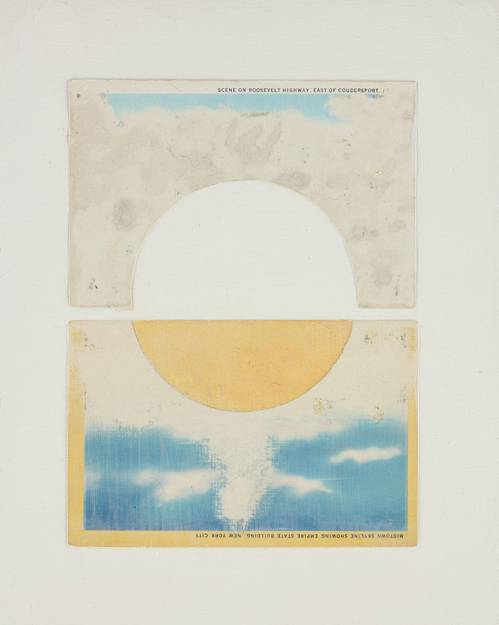
Unlike the other two artists in the show who make more or less Realist images, Tracy Taylor Grubbs’ small-scale pieces are quasi-abstract and Symbolist in nature. In her works painted on vintage postcards, the artist has rubbed off the previous images and altered them with paint and pastel-colored orbs that could be perceived as setting suns or rising moons.
They appear at first glance almost Rothko-esque, with color-block shapes that parallel the earth-tone layers of paint. The orbs and the muted color palette conjure up feelings of desert landscapes contrasted by blue skies. Undoubtedly drawing inspiration from her work in land conservation in California, Grubbs’ postcard pieces evoke a sense of evolution, of constant growth and natural change. The fact that these pieces had life previously as manmade, utilitarian objects and now are taken over by Grubb’s artistry reminds the viewer that the natural world evolves and can live on in different forms.
Flights of fancy
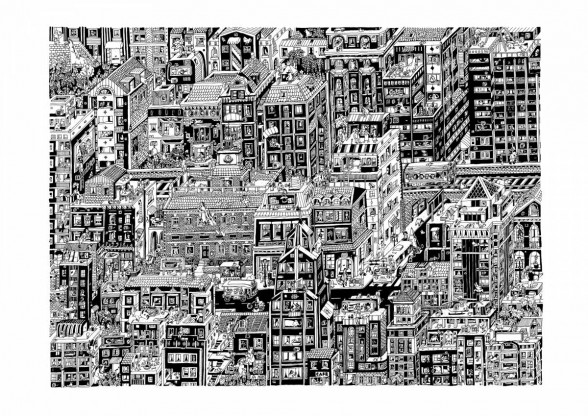
Imaginative cityscapes with overwhelming detail populate Cornet’s works. His urban scenes come well-equipped with touches of cartoonish humor–human/animal hybrids galore. According to gallerist Michael Lieberman, the artist’s life thus far has been spent exploring the world in South America, Paris, Lima, Barcelona, and even Philadelphia.
No doubt inspired by the sights and sounds of these metropolises, Cornet’s prints and ink drawings are living, breathing pictorial snippets of city life, infused with fantastical happenings and almost-dreamlike situations. In Cornet’s depiction of Philadelphia, a bird (?) woman (?) can be seen soaring above the rooftops strapped to a jetpack, while not too far away, an elephant hangs out on the balcony of a ritzy apartment.
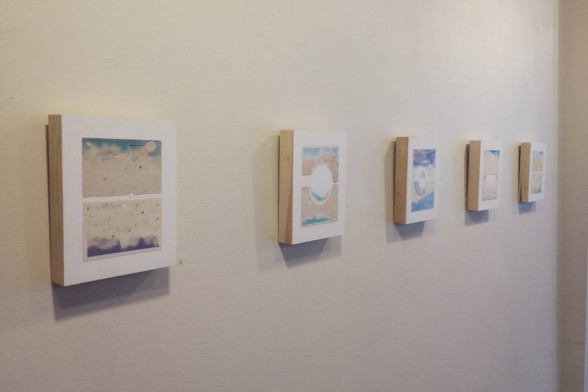
The sense of the continuous world and how it relates to the small snippets of our perceived spaces is common throughout each piece in Hooloon’s exhibit. The artists have presented to us how they interpret their spaces; they challenge us to find familiarity in their interpretations, and at the same time to examine our own perceptions of the world.
Hooloon’s three-artist exhibit is on view until Nov. 2, 2014 at Hooloon Art, 53 North 2nd St., Philadelphia, PA.









